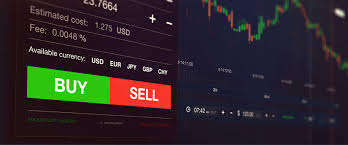
Forex Trading Basics: Understanding the Currency Market
Forex trading, or foreign exchange trading, is the process of exchanging one currency for another with the aim of making a profit. The forex market is one of the largest and most liquid financial markets in the world, with a daily trading volume exceeding $6 trillion. To delve into the intricacies of this dynamic market, it’s essential to grasp the basic concepts, strategies, and tools available to traders today. For a comprehensive guide to these concepts, you can visit forex trading basics https://forex-level.com/.
What is Forex Trading?
Forex trading involves the buying and selling of currency pairs. A currency pair consists of a base currency and a quote currency. For example, in the EUR/USD pair, the Euro (EUR) is the base currency, and the US Dollar (USD) is the quote currency. Traders speculate on the direction of currency pairs, betting that one currency will strengthen or weaken against another.
The Mechanics of Forex Trading
To understand forex trading, one must comprehend its fundamental mechanics, including pips, lots, and leverage.
Pips
A pip (percentage in point) is the smallest price move that a given exchange rate can make based on market convention. For most currency pairs, a pip is equivalent to 0.0001. Understanding pips is crucial for calculating changes in currency values and the potential profits or losses from trades.
Lots
Forex is traded in lots, which are standardized units. The standard lot size is 100,000 units of the base currency, but there are also mini lots (10,000 units) and micro lots (1,000 units), allowing traders to manage their risk according to their account size and trading strategy.
Leverage
Leverage allows traders to control larger positions with a smaller amount of capital. For example, with a leverage of 100:1, a trader can control a $100,000 position with just $1,000. While leverage can amplify profits, it also increases potential losses, making risk management crucial for successful trading.
Types of Forex Market Participants
The forex market consists of several types of participants, including:

Central Banks
Central banks play a significant role in the forex market by influencing currency values through monetary policy and interventions. Their decisions on interest rates and economic policies can lead to increased volatility in currency prices.
Financial Institutions and Corporations
Banks and financial institutions trade currencies for various reasons, including hedging against foreign exchange risk, speculating on price movements, and facilitating international trade for their clients.
Retail Traders
Retail traders are individual investors who participate in the forex market, often through online trading platforms. They range from beginners to professional traders and contribute to market liquidity by buying and selling currency pairs.
Forex Trading Strategies
Understanding various trading strategies can significantly impact a trader’s success in the forex market. Here are some popular strategies:
Scalping
Scalping involves making small profits from numerous trades throughout the day. Scalpers hold positions for a very short time, aiming to capitalize on minor price movements.
Day Trading
Day trading entails opening and closing trades within the same day, with traders typically looking to profit from short-term market movements. This strategy requires strong technical analysis skills to make quick decisions.
Swing Trading
Swing traders hold positions for several days or weeks, seeking to benefit from price swings in the market. This strategy combines both technical and fundamental analysis.
Technical and Fundamental Analysis
Successful forex trading often relies on two types of analysis: technical analysis and fundamental analysis.
Technical Analysis
Technical analysis involves studying historical price charts to identify patterns and trends. Traders use indicators like moving averages, RSI, and MACD to evaluate market conditions and make informed trading decisions.
Fundamental Analysis
Fundamental analysis looks at economic indicators, interest rates, and geopolitical events that can impact currency values. Understanding economic calendars and news releases is vital for traders who rely on this form of analysis.

Choosing a Forex Broker
Choosing the right forex broker is essential for any trader. When selecting a broker, consider the following factors:
Regulation
Ensure that the broker is regulated by a reputable financial authority to protect your funds and ensure fair trading practices.
Trading Platform
The trading platform should be user-friendly and equipped with advanced tools for analysis, order execution, and account management.
Spreads and Commissions
Compare spreads and commissions from different brokers, as they directly affect your trading costs. Look for competitive pricing that suits your trading style.
Customer Support
Having reliable customer support is vital, especially when you face challenges or need assistance with your trading account.
Risk Management in Forex Trading
Risk management is crucial in forex trading to safeguard your capital and maintain a sustainable trading career. Here are some essential risk management practices:
Setting Stop-Loss Orders
A stop-loss order automatically closes your position when the market reaches a specified price. This helps limit potential losses and is a fundamental component of any trading strategy.
Position Sizing
Determining the appropriate position size for each trade based on the size of your trading account and risk tolerance prevents overexposure to the market.
Diversification
Spreading your investments across different currency pairs can reduce overall risk by minimizing the impact of a single event on your portfolio.
Conclusion
Forex trading offers exciting opportunities for profit but comes with inherent risks. By mastering the fundamentals, developing effective strategies, and practicing sound risk management, traders can navigate the complexities of the forex market successfully. Aspiring traders should continuously educate themselves and practice their skills through demo accounts before venturing into live trading environments.

Comentarios recientes